Convergent evolution in dippers (Aves, Cinclidae): The only wing-propelled diving songbirds
- PMID: 34813153
- PMCID: PMC9298897
- DOI: 10.1002/ar.24820
Convergent evolution in dippers (Aves, Cinclidae): The only wing-propelled diving songbirds
Abstract
Of the more than 6,000 members of the most speciose avian clade, Passeriformes (perching birds), only the five species of dippers (Cinclidae, Cinclus) use their wings to swim underwater. Among nonpasserine wing-propelled divers (alcids, diving petrels, penguins, and plotopterids), convergent evolution of morphological characteristics related to this highly derived method of locomotion have been well-documented, suggesting that the demands of this behavior exert strong selective pressure. However, despite their unique anatomical attributes, dippers have been the focus of comparatively few studies and potential convergence between dippers and nonpasseriform wing-propelled divers has not been previously examined. In this study, a suite of characteristics that are shared among many wing-propelled diving birds were identified and the distribution of those characteristics across representatives of all clades of extant and extinct wing-propelled divers were evaluated to assess convergence. Putatively convergent characteristics were drawn from a relatively wide range of sources including osteology, myology, endocranial anatomy, integument, and ethology. Comparisons reveal that whereas nonpasseriform wing-propelled divers do in fact share some anatomical characteristics putatively associated with the biomechanics of underwater "flight", dippers have evolved this highly derived method of locomotion without converging on the majority of concomitant changes observed in other taxa. Changes in the flight musculature and feathers, reduction of the keratin bounded external nares and an increase in subcutaneous fat are shared with other wing-propelled diving birds, but endocranial anatomy shows no significant shifts and osteological modifications are limited. Muscular and integumentary novelties may precede skeletal and neuroendocranial morphology in the acquisition of this novel locomotory mode, with implications for understanding potential biases in the fossil record of other such transitions. Thus, dippers represent an example of a highly derived and complex behavioral convergence that is not fully associated with the anatomical changes observed in other wing-propelled divers, perhaps owing to the relative recency of their divergence from nondiving passeriforms.
Keywords: Cinclus; Pan-Alcidae; Pan-Sphenisciformes; Passeriformes; Pelecanoididae; Plotopteridae; endocast; ethology; integument; myology; osteology.
© 2021 The Authors. The Anatomical Record published by Wiley Periodicals LLC on behalf of American Association for Anatomy.
Conflict of interest statement
The authors declare that they have no conflict of interest.
Figures


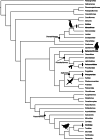
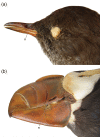
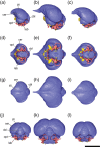









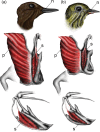





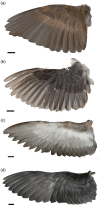


References
-
- Balanoff, A. M. , Bever, G. S. , Colbert, M. W. , Clarke, J. A. , Field, D. J. , Gignac, P. M. , Ksepka, D. T. , Ridgely, R. , Smith, N. A. , Torres, C. , Walsh, S. , & Witmer, L. (2016). Best practices for digitally constructing endocranial casts: Examples from birds and their dinosaurian relatives. Journal of Anatomy, 229, 173–190. 10.1111/joa.12378 - DOI - PMC - PubMed
-
- Baumel, J. J. , & Witmer, L. (1993). Osteologica. In Baumel J. J., King A. S., Breazile J. E., Evans H. E., & Vande Berge J. C. (Eds.), Handbook of avian anatomy: Nomina Anatomica Avium (Vol. 23, pp. 45–132). Nuttall Ornithological Club.
-
- Bellairs, A. A. , & Jenkin, C. R. (1960). The skeleton of birds. In Marshall J. A. (Ed.), Biology and comparative physiology of birds (pp. 241–300). Academic Press.
-
- Bürkner, P. C. (2017). brms: An R package for Bayesian multilevel models using Stan. Journal of Statistical Software, 80, 1–28.
Publication types
MeSH terms
LinkOut - more resources
Full Text Sources

